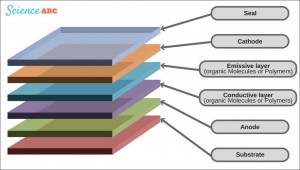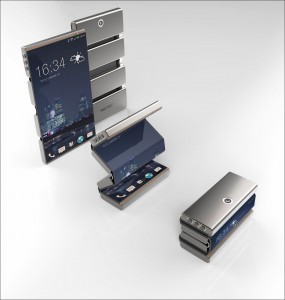Display technology is evolving at an exponential level. As the demand for digital visuals spikes, we must always keep the human-machine interface (HMI) at the forefront of design and engineering. This applies to military applications as much as it does to workstations, gaming, mobile, outdoor and so on. Sure, it’s great if displays become more sophisticated each year—so long as mission success is not compromised.
OLED Displays
 OLED (Organic Light Emitting Diode) displays could replace LED backlit displays in the not-too-distant future. OLED performance is equal to or better than LED or LCD screens in high brightness output, high contrast ratio, wide color gamut, wide viewing angles and fast response times. Additionally, OLED displays do not require a backlight, which translates to extremely thin screens that are more energy efficient and simpler to build than LCD displays, not to mention the weight savings.
OLED (Organic Light Emitting Diode) displays could replace LED backlit displays in the not-too-distant future. OLED performance is equal to or better than LED or LCD screens in high brightness output, high contrast ratio, wide color gamut, wide viewing angles and fast response times. Additionally, OLED displays do not require a backlight, which translates to extremely thin screens that are more energy efficient and simpler to build than LCD displays, not to mention the weight savings.
Flexible Displays
 Another benefit to OLED technology is its inherent flexibility. Flexible displays are more than the latest fad. Made from malleable components (such as flexible glass, metal, or plastic) that allow it to be reshaped for a variety of configurations, bendable displays are virtually shatterproof. They may become the military’s number one choice, what with their slimness, light weight, increased durability and improved image quality. As the technology progresses and trickles down into the consumer market, it’s likely the costs will drop below that of current LCDs (time will tell if this pans out—we’re not soothsayers). Of course, curved TV screens—with their perfect picture from every viewing angle—are already available to you and me. Can you imagine an ultra-thin, bendable smartphone that folds up neatly to take up minimal room in your pants pocket or purse?
Another benefit to OLED technology is its inherent flexibility. Flexible displays are more than the latest fad. Made from malleable components (such as flexible glass, metal, or plastic) that allow it to be reshaped for a variety of configurations, bendable displays are virtually shatterproof. They may become the military’s number one choice, what with their slimness, light weight, increased durability and improved image quality. As the technology progresses and trickles down into the consumer market, it’s likely the costs will drop below that of current LCDs (time will tell if this pans out—we’re not soothsayers). Of course, curved TV screens—with their perfect picture from every viewing angle—are already available to you and me. Can you imagine an ultra-thin, bendable smartphone that folds up neatly to take up minimal room in your pants pocket or purse?
Tactile Touch Screens
 Touch screen technology has been around for decades now—most notably in our very own VuePoint touch terminal, which debuted in 1977, and is still in production today in its third generation form. Multitouch touch screens have advanced the user experience greatly. And now, the latest innovation is haptic touch screens, which provide tactile feedback to the user as they scroll over items or click buttons. They do this by delivering different textures to the finger, or a low electrical current that stimulates the skin just enough to confirm a selection.
Touch screen technology has been around for decades now—most notably in our very own VuePoint touch terminal, which debuted in 1977, and is still in production today in its third generation form. Multitouch touch screens have advanced the user experience greatly. And now, the latest innovation is haptic touch screens, which provide tactile feedback to the user as they scroll over items or click buttons. They do this by delivering different textures to the finger, or a low electrical current that stimulates the skin just enough to confirm a selection.
And More to Come
On the horizon (if not already here) are 3-D screens that don’t require special glasses for the immersive 3-D experience, and holographic displays of the sort we first saw in Star Wars, when Princess Leia sent a “video” message via R2D2. The rapid-fire improvements in display technology ensure an exciting future for generations. Soon, Star Trek will no longer be considered science fiction, but simply the norm.

